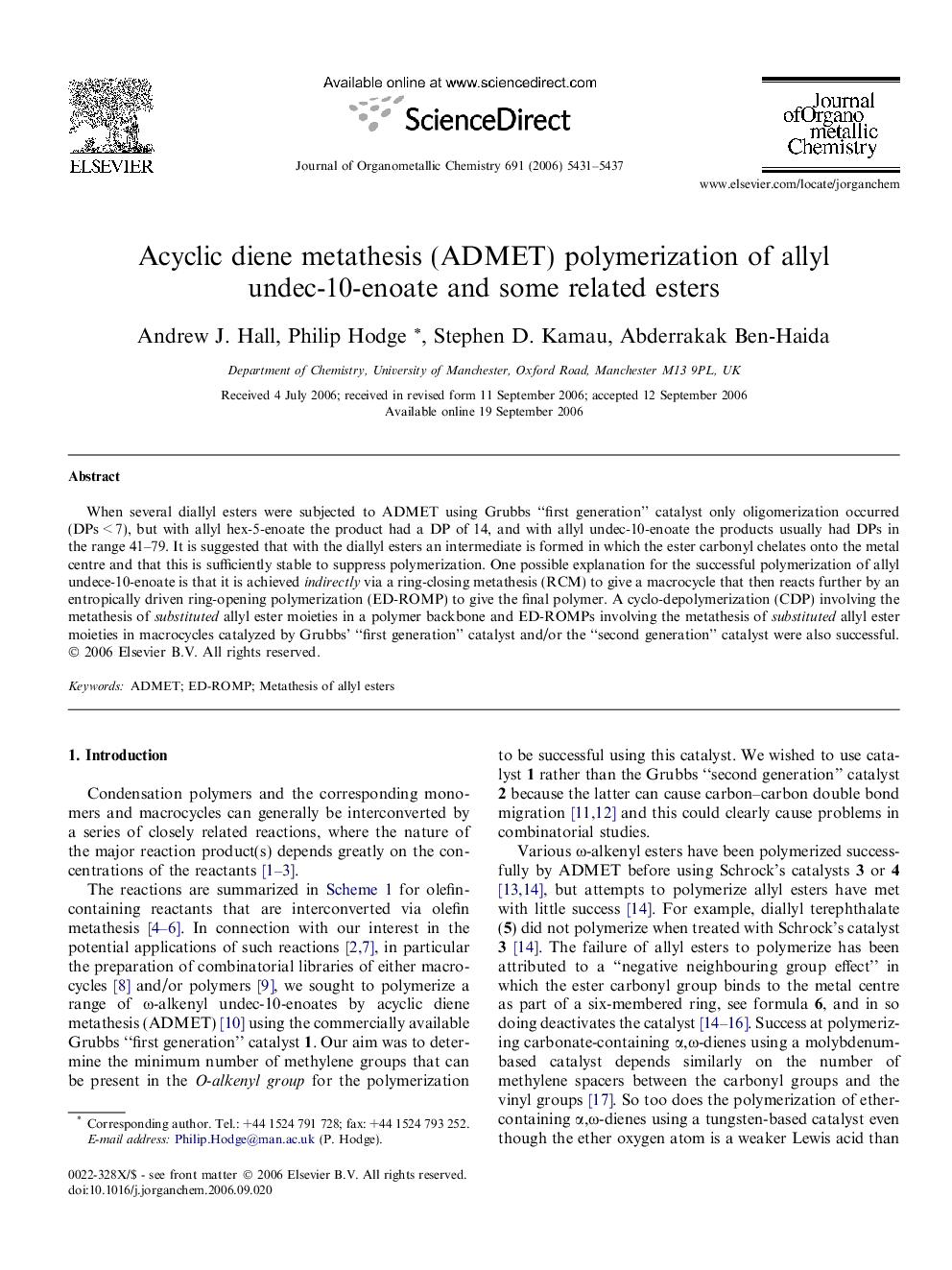| Article ID | Journal | Published Year | Pages | File Type |
|---|---|---|---|---|
| 1323763 | Journal of Organometallic Chemistry | 2006 | 7 Pages |
When several diallyl esters were subjected to ADMET using Grubbs “first generation” catalyst only oligomerization occurred (DPs < 7), but with allyl hex-5-enoate the product had a DP of 14, and with allyl undec-10-enoate the products usually had DPs in the range 41–79. It is suggested that with the diallyl esters an intermediate is formed in which the ester carbonyl chelates onto the metal centre and that this is sufficiently stable to suppress polymerization. One possible explanation for the successful polymerization of allyl undece-10-enoate is that it is achieved indirectly via a ring-closing metathesis (RCM) to give a macrocycle that then reacts further by an entropically driven ring-opening polymerization (ED-ROMP) to give the final polymer. A cyclo-depolymerization (CDP) involving the metathesis of substituted allyl ester moieties in a polymer backbone and ED-ROMPs involving the metathesis of substituted allyl ester moieties in macrocycles catalyzed by Grubbs’ “first generation” catalyst and/or the “second generation” catalyst were also successful.
Graphical abstractAllyl undec-10-enoate undergoes ADMET to give a polymer: typical DPs in the range 41–87. This is a rare example of an allyl ester polymerizing. Substituted allyl ester groups in a polymer and in macrocycles also undergo olefin metathesis. It is suggested that allyl undec-10-enoate may polymerize via ring-closing metathesis and entropically driven ring-opening polymerization.Figure optionsDownload full-size imageDownload as PowerPoint slide
